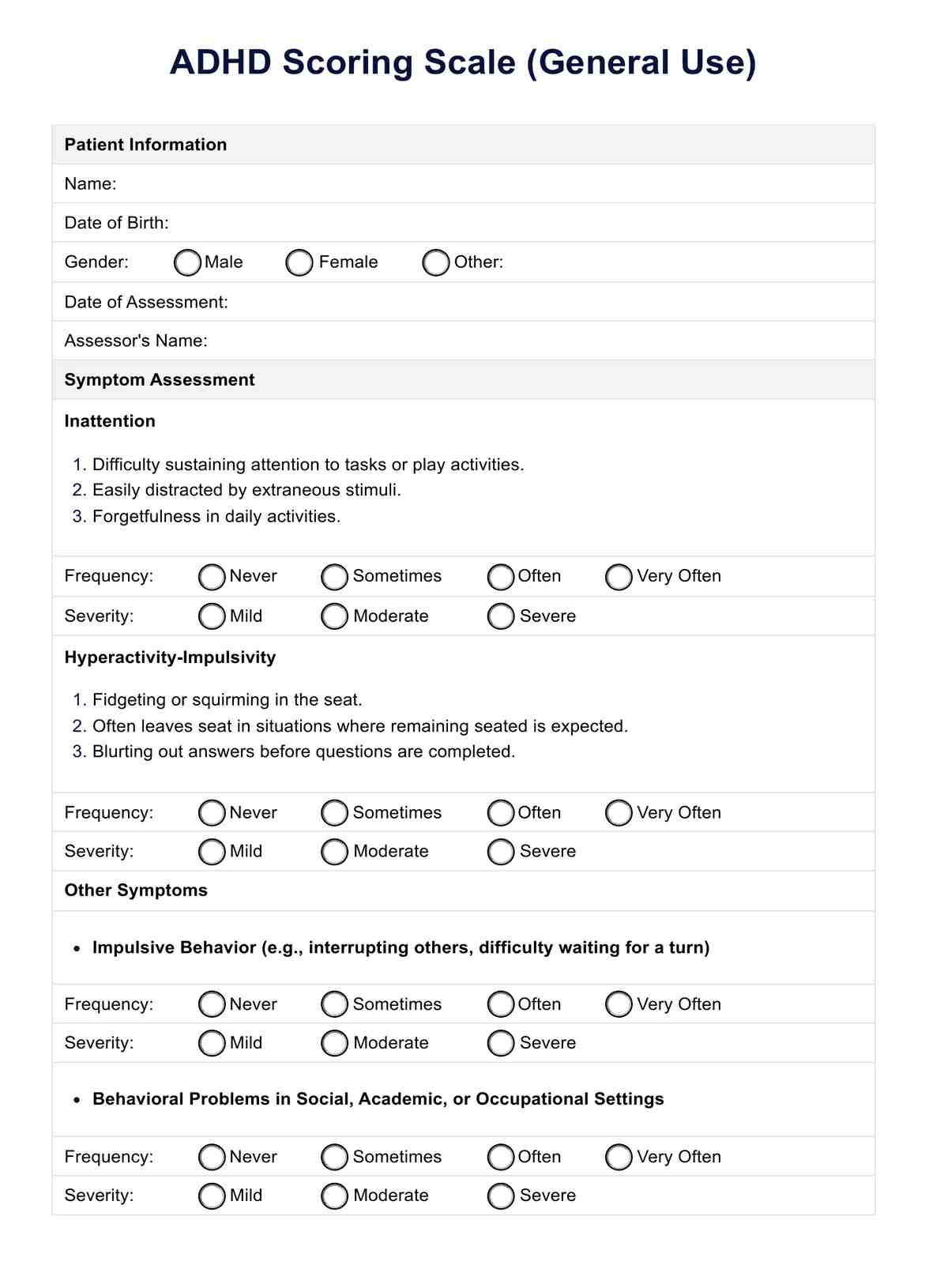The best ADHD rating score and scale depends on individual needs and preferences. Commonly used scales include the Vanderbilt Assessment and ADHD Rating Scale-IV.

ADHD Scoring Scale
Explore the ADHD Scoring Scale, a comprehensive tool for assessing symptoms and severity of ADHD. Enhance understanding and treatment strategies.
Use Template
ADHD Scoring Scale Template
Commonly asked questions
ADHD diagnosis in the DSM-5 involves assessing symptoms across two main domains: inattention and hyperactivity-impulsivity. A diagnosis is based on the presence of specific criteria outlined in the manual.
ADHD diagnosis is typically measured using standardized rating scales, clinical interviews, behavioral observations, and assessment of functional impairment.
EHR and practice management software
Get started for free
*No credit card required
Free
$0/usd
Unlimited clients
Telehealth
1GB of storage
Client portal text
Automated billing and online payments











